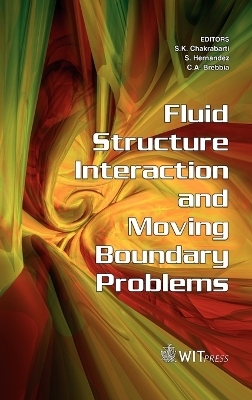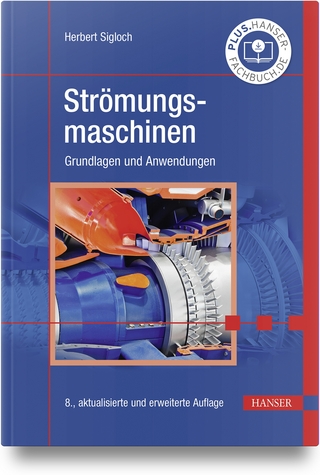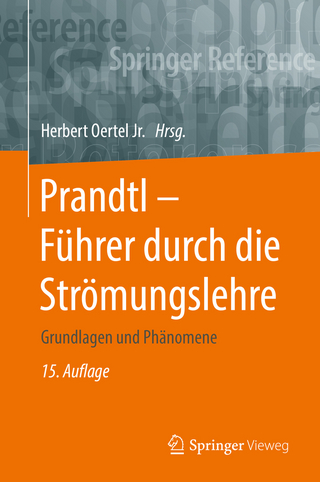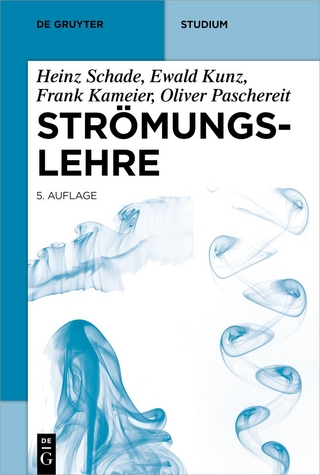
Fluid Structure Interaction and Moving Boundary Problems
WIT Press (Verlag)
978-1-84564-027-9 (ISBN)
This book contains papers presented at the Third International Conference on Fluid Structure Interaction and the Eighth International Conference on Computational Modelling and Experimental Measurements of Free and Moving Boundary Problems. The first section is concerned with the interaction of fluids with a variety of structures encountered by the flow such as wind, current, biofluids, ocean waves, tall buildings, ocean structures, cables, towers, bridges, risers and biological structures. The second part deals with particular problems where the position of the border or interphase boundaries has to be determined as part of the solution.
Part I: Fluid Structure Interaction Section 1: Advances in interaction problems in CFD Development of the coupled MAZ/FLEX code; Coupling of FEFLO with SIMPACT; Advances in FSI using body-fitted unstructured grids; A CFD based numerical study on aerodynamic characteristics of |ETH cross sections using baffle plates Section 2: Cavitation effects in turbo machines and pumps Developments to minimize the occurrence of surface and subsurface vortices at pump intakes; Time-domain analysis of the hydroelastic response of cavitating propulsors; Velocity and static pressure profiles in wide angled two-dimensional stalled diffuser flows; Experimental investigation of the effect of solid-mixture on the cavitation characteristic of a centrifugal pump; Experimental study of the influence of geometrical parameters on the cavitation of a small centrifugal pump; An investigation about preventing cavitation damage and fatigue failure in Derbendikhan power station Section 3: Computational methods Verification and validation in computational solid mechanics and the ASME Standards Committee; Embankment dam overtopping and collapse: an innovative approach to predict the breach outflow hydrograph; Gate failure, numerical and physical modelling at Gouin dam Section 4: Fluid and biological tissue interaction Simulation of blood flow and vessel deformation in three-dimensional, patient-specific models of the cardiovascular system using a novel method for fluid-solid interactions; Interaction of cryogen spray with human skin under vacuum pressures Section 5: Fluid pipeline interactions 3D finite element analysis of a hydraulic engine mount including fluid-structure interactions; Effect of hydrodynamic drag on the stability of a cantilever pipe conveying fluid; Qualitative analysis of dynamic effects in oil pipelines Section 6: Hydrodynamic forces Bluff-body flow created by combined rotary and translational oscillation; Interaction between a tethered sphere and a free surface flow Section 7: Mechanics of cables, risers and moorings Investigation of a catenary riser undergoing VIV; Vortex-induced vibrations and lock-in phenomenon of bellows structure subjected to fluid flow Section 8: Offshore structures and ship dynamics Time-frequency analysis of spar motions; Dynamic response and fluid structure interaction of submerged floating tunnels; Steady current forces on tanker-based FPSOs; The dynamics of deepwater offloading buoys; Nonlinear response analysis of a SeaStar offshore Tension Leg Platform in six degrees of freedom Section 9: Response of structures including fluid dynamics Current flow past large concrete piers: CFD analysis vs. physical model tests; An independent geometry modelling method in wave-body interactions; Estimating time-averaged turbulent fluid forces from an ensemble-averaged flow field for engineering applications; A new very fast simulation method for fluid structure interaction of an air bearing crossing steps in the ground; Undersea fluid/structure coupling methodology; On monolithic approaches to fluid-structure interactions; Floating Common Foundations for Multiple Building Structures (FCF-MBS) Section 10: Structure response to severe shock and blast loading On the coupling of CFD and CSD methodologies for modeling blast-structure interactions; Experimental analysis and numerical simulation of a fuel tank filler in a crash environment; A CSD finite element scheme for coupled blast simulations; Modeling enhanced blast explosives using a multiphase mixture approach; Analysis of blast loaded structures by numerical simulation; A study of a moderately reinforced concrete wall subject to high rate loadings due to impacting bodies; Diagnostics for multiple-phase blast flows Section 11: Wind effects on bridges and towers A comparison of flutter speed of the Messina Bridge considering several cable configurations; Control of wind-induced nonlinear oscillations in suspension bridges; Controlling beat phenomena in coupled systems using asymmetric tuned liquid column dampers; Distributed computing for the evaluation of the aeroelastic response and sensitivity analysis of flutter speed of the Messina Bridge; A wavelet-based method to simulate gust response of structures Part II: Moving Boundaries Section 1: Free surface flow Numerical simulation of free surface flows by Lagrangian particle methods; The Euler-type description of Lagrangian water waves; An implicit finite volume method for unsteady free surface flows; A finite volume model for the resolution of the shallow water equations with moving boundary conditions; Numerical calculations of viscous effects on water waves; Spectral characterization of wave patterns in stratified concurrent air Cwater channel flow using LDV; Approaches to solving a free boundary porous medium flow problem Section 2: Computational fluid mechanics A generalized method for advective-diffusive computations in engineering; A Cartesian method for mixing tank simulation; Analysis of hydrodynamic and transport phenomena in the (R)R a de Arousa Z: a numerical model for high environmental impact estuaries; RANS turbulence models for pitching airfoil Section 3: Phase change Solution of the transient direct chill casting problem with simultaneous material and interphase moving boundaries by the local radial basis function collocation technique; A numerical model of the crystallization of pure aluminium; A new alternative numerical approach applied to free-moving boundary problems Section 4: Advanced computational simulation Optimal thickness design of laminated cylinders with linearly distributed prestress; Moving boundary problem solved by the Adomian decomposition method; Wetting in pressure driven slot flow; Simulation of a weld pool interface motion by a variational inequality approach; Numerical study of the residual stress field during arc welding with a trailing heat sink
| Erscheint lt. Verlag | 2.9.2005 |
|---|---|
| Reihe/Serie | WIT Transactions on the Built Environment ; No. 84 |
| Zusatzinfo | Illustrations |
| Verlagsort | Southampton |
| Sprache | englisch |
| Maße | 155 x 230 mm |
| Themenwelt | Naturwissenschaften ► Physik / Astronomie ► Strömungsmechanik |
| ISBN-10 | 1-84564-027-6 / 1845640276 |
| ISBN-13 | 978-1-84564-027-9 / 9781845640279 |
| Zustand | Neuware |
| Haben Sie eine Frage zum Produkt? |
aus dem Bereich


